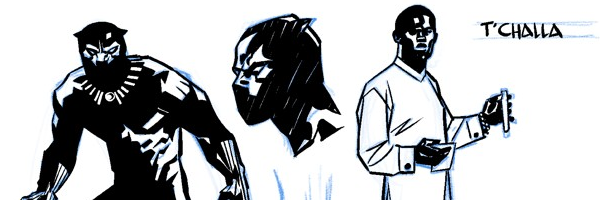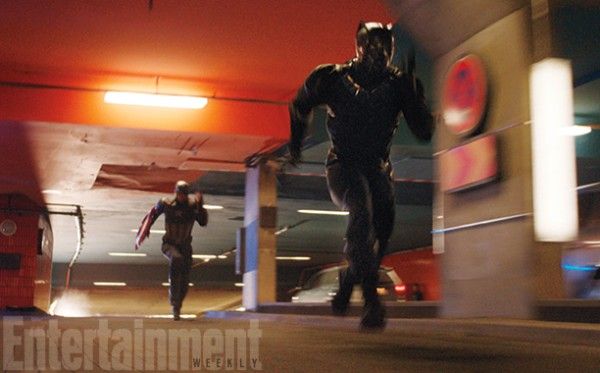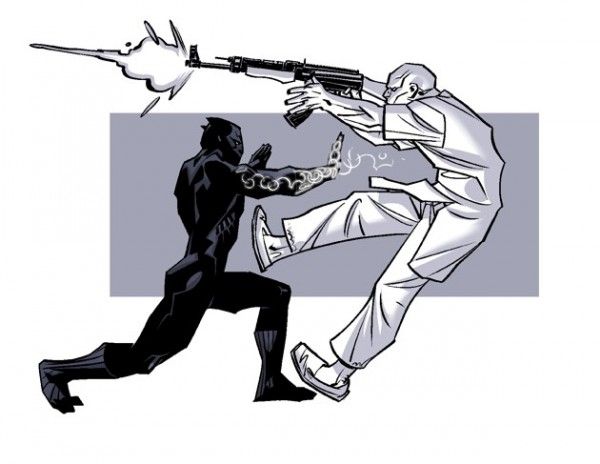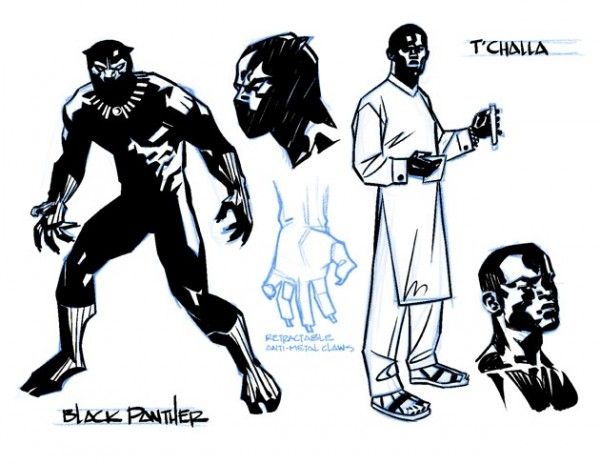From the release of the first trailer to the EW cover story, we have been learning a lot about Captain America: Civil War in recent days. But of all the remaining questions left to be answered, Chadwick Boseman’s Black Panther is one of the biggest. This will be the first appearance of the character in the franchise prior to his own film, Black Panther, in February 2018, as well as the debut of the first black superhero Marvel ever introduced (as Falcon appeared in later comics). The EW article revealed more details about the character, including his role in the film, how they decided to introduce him in this story, and even the make of his suit. Now we have learned more about the character’s development in a different arena from the man tasked with writing a new series of comics.
Back in September, Ta-Nehisi Coates was tapped to conceive a new series for the character, with an aim to debut it for Marvel Comics in Spring 2016. Coates is a unique and intriguing choice given his body of work, including writing for The Atlantic, mainly on race relations in America, as well as the recent critical praise and success he has garnered with his novel Between the World and Me. He returned to The Atlantic and revealed some details about his approach to the project.
Apparently, Coates has already written a few “scripts,” as he calls them, and cites inspiration he has received from comic book artwork by Brian Stelfreeze. As he continues working on the project, Coates intends to make periodic updates on the process. Besides the new information, what shows through in this first post is the modesty and honor Coates has to be working on this project, which makes sense given the subject as well as his self-professed affinity for Marvel comic books. Beyond that, Coates reveals his approach to the task:
1.) Read a ton of back issues and try to think about what I find interesting (Ramonda) and what I find less interessting (M’Baku.) 2.) Get a detailed outline done of all the issues I was contracted to write. 3.) Write those scripts early in order to give Brian [Stelfreeze], and my editors, a chance to tell me what I am doing wrong. 4.) Revise the outline regularly, as events (and finished scripts) dictate a need to change. That has been the plan. Having a plan doesn’t guarantee success. But not having a plan probably guarantees failure.
As mentioned, Coates comments on how Stelfreeze’s art has influenced how he has shaped the character, and how that collaboration has helped him:
One thing I did not count on was the extent to which the art would shape the story. Brian’s thoughts on T’Challa, and his supporting cast, have been invaluable. You can see the fruits of collaboration in the image above. After talking back and forth we came up with some new ideas for how T’Challa’s famed Vibranium-weave suit might work—in this case, absorbing kinetic energy and allowing him to fire that energy back out in short energy bursts. “Energy bursts” almost gets it wrong—think “force-push” not “optic blast.” All the old powers are there—enhanced senses, agility, peak-human strength, etc. But this idea (and others) really came out of Brian’s thoughts—not just on the suit—but on the properties of Vibranium itself.
It’ll be interesting to see if the films in anyway take cues from this new series of comics. Obviously, it’s no coincidence that a new Black Panther series has been issued just as the character is coming to the big screen. So perhaps this is a precursor to what we can expect in Captain America: Civil War and Black Panther. It’s also curious to see whether or not the story Coates develops becomes the basis for the character’s story in the films. Regardless, Coates promises to have more updates as he continues the process. But until then, check out Stelfreeze’s “glorious” artwork below. And you can read the whole piece, titled Conceptualizing the Black Panther, here.




